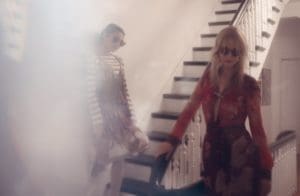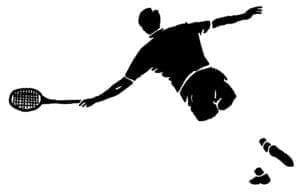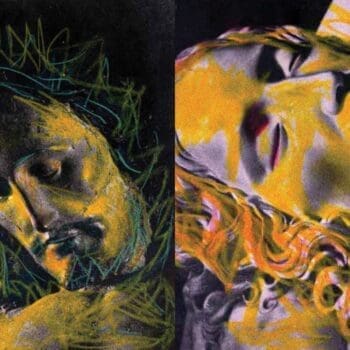by Concetta D’Angelo
photography Giulia Venanzi
Issue 1.3
Feu de Joie
The first time I saw Zaelia Bishop’s art pieces they reminded me of a game I used to play as a child. It required two players and a long rubber band. One child wrapped the band around his hands, creating a cradle. The other pinched it with his fingers in two key points, lifting it off the first child’s hands, thus creating a mirror. Raising and crossing it with his little fingers, the first child reclaimed the rubber band, turning it into a pair of beams. The beams then became a cradle, and a mirror again, and then a pair of beams, and a cradle again. In the sanctuary of memories that is Bishop’s studio, the first déjà vu came, as a warming welcome.
Zaelia’s touch in molding experiences with his assemblages of fragile matter reminds me of this: the light touch through which a child turns a rubber band into something else. He manipulates a substance that is dense and mysterious—the flow of existence—insisting above all on the fractures of time and growth, where memories are disorganized, shattered, and often bloody. His subject is handled with extreme tact and rigor. Only a few moments of contact in the right places.
Zaelia’s universe is populated by assemblages of enigmatic chimeras: figures chained by undefined time who stare at the observer sometimes with thorny eyes, sometimes with floral ones, cruel and delicate like each memory. Zaelia investigates all possibilities, descending to the deep abyss of human experience. He delves into the labyrinth of memories, probing them the more they hurt, in order to purify them with new symbolism through a catharsis which culminates in the creation of impassive icons, disarmingly calm. It depends to a certain extent on Zaelia’s nonchalance, as he shifts between light and shadow with reassuring ease.
Indeed his explorations are the outcome of his memories, which reveal their enchantment when a profound feeling of déjà vu hits you, removing an intimate veil like a ceremonial strip.
Above, from top left to bottom right: Feu de Joie II; Feu de Joie III; Feu de Joie IV; Feu de Joie V.
The unreleased “Feu de Joie” series, revealed on these pages for the first time, represents a small miracle. The raw materials are delicate butterfly wings, transformed in a powerful gift of infinite possibilities. At first sight the butterflies attract us by their beauty. They take us back to a state of wonder and childhood reminiscence. Then our gaze enters a vertigo as we realize that the wings are multiple, overlaid on one another, until the butterflies’ anatomy is entirely distorted.
That’s when we enter the labyrinth of impossible (and yet possible) flights. In nature these butterflies wouldn’t be able to maintain balance or fly. Zaelia traces a path which invites us to fly with our own courage and balance, subtracting his creatures from the realm of illusion. Like an alate amulet, they allow our wings to take off to any direction, protecting and encouraging our flight regardless of the weather.
Nonetheless, the path behind these flights is not linear. They are flights shaken by the impetuous desire to surrender to the stream and by the shadows we bear, the same multiple shadows which project themselves in subtle directions. If anyone still wonders, these butterflies are real. Above all, because they have a shadow. It’s what makes flying possible.
The artist himself couldn’t say if it is the wing that determines the shadow, or vice versa. In this series Zaelia seems to have knitted the memory of courage, which in this case coincides with the gift of lightness. He presents us with a flying carpet, which embraces and resolves in itself the wounds and shadows, transforming them in an instrument of invincible flight.
And the cradle becomes a mirror; the mirror becomes a pair of beams.
Above, left: Feu de Joie VI; above right: Feu de Joie VII.










